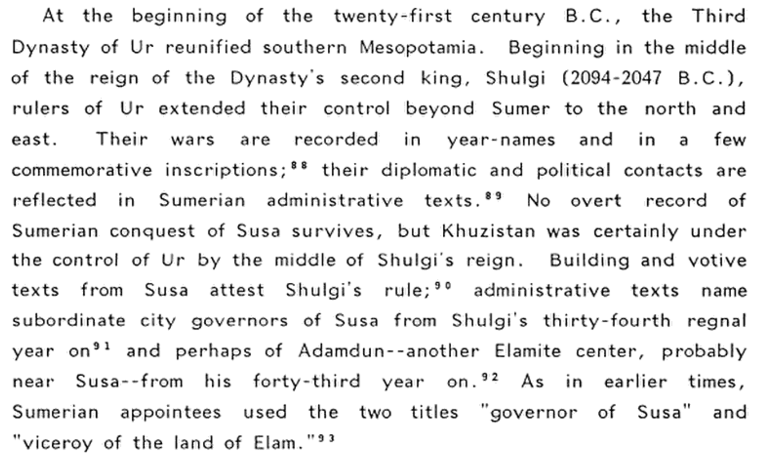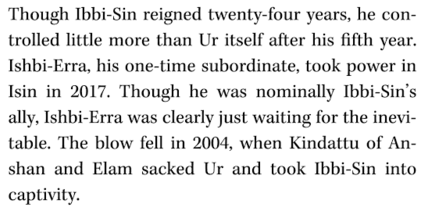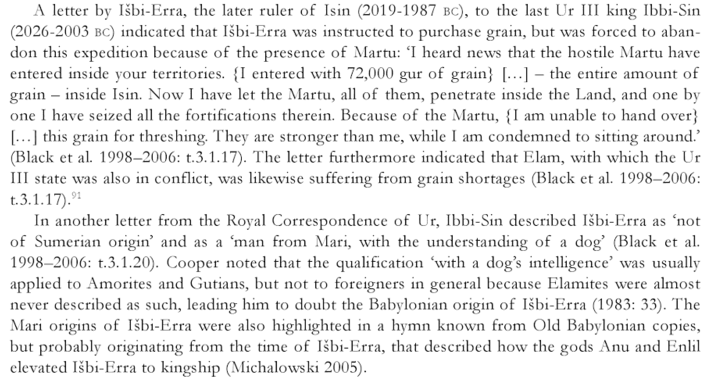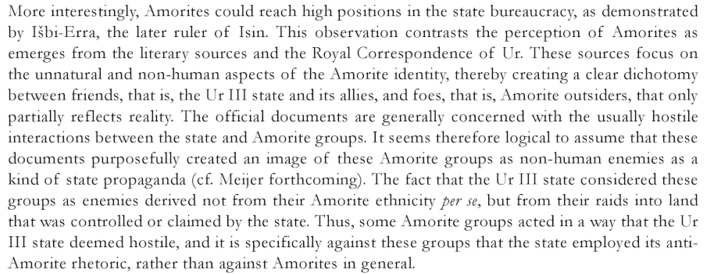|
Other Archaeological Sites / The Neolithic of the Levant (500 Page Book Online) Ancient Isin (Arabic: Ishan al-Bahriyat) in Iraq
The tell (mound) in southern Mesopotamia is circa 100 hectares in area and is located 27 km south of Nippur. Its history of occupation extends from (probably) the Ubaid in the 5th millennium BC through the Persian period in the 1st millennium BC (1). The site of Isin was occupied at least as early as the Early Dynastic (circa 2900–2350 BC) period in the middle of the 3rd millennium BC. The first epigraphic reference to Isin was not until the Ur III period (2). The most important building unearthed was a temple dedicated to Gula -- goddess of healing and Isin’s chief deity -- and her consort Ninurta. This was located on the highest part of the mound. The temple itself was a rectangular building (circa 70 metres x 50 metres) containing two large courtyards and surrounded by a wall. It was probably first constructed in the Early Dynastic period (circa 2700) but only a few bricks from this phase have survived. The temple was rebuilt several times in the Old Babylonian (Middle Bronze Age) -- Kassite (Late Bronze Age) and Neo-Babylonian periods. Its main period of use appears to have been under Kassite rule. Other material remains from the site include a necropolis of Early Bronze Age date (1).
Prologue --- The 3rd Dynasty of Ur: Ur-Nammu -- Shulgi -- Amar-Sin -- Shu-Sin and Ibbi-Sin.
The leading adversaries of the Third Dynasty of Ur and Shu-Sin (2037–2029 BC) in his eastern wars included the land of the Su-people (LÚ.SUki) in Shimashki territory and Anshan. These same territories took part in the later defeat of Ur, led by a Shimashkian king of Elam. The beginnings of the Shimashkian "dynasty" fall no earlier than circa 2030 B.C. The autonomous highland states coalesced through military or dynastic alliance into the Shimashkian monarchy during the period of Sumerian military and diplomatic probes in southwestern Iran. During the times of Ibbi-Sin of Ur and Ishbi-Erra of Isin the Shimashkian Elamite state took control of Khuzistan, waged war on Ur and Isin and eventually captured Ur (5). The emergence of Isin was presaged by the gradual collapse of the Third Dynasty of Ur toward the end of the 3rd millennium BC under Ibbi-Sin. The city-states Isin and Larsa contested the rule of southern Mesopotamia in the early 2nd millennium BC.
As Sumer disintegrated a provincial governor (énsi) of Ur named Ishbi-Erra (Akkadian: Išbi-erra: flourished circa 2019 BC — 1987 BC) relocated to Isin and established the First Dynasty of Isin. Note: During the Third Dynasty of Ur (about 2100–2000 BC) énsi referred to the provincial governors of the kingdom. These exercised great powers in terms of government -- tax revenue and jurisdiction but they were supervised -- installed and dismissed by the lugal (king or ruler) of Ur.
At the outset of his career Išbi-erra was a high-ranking official of King Ibbi-Sin -- the last king of the Third Dynasty of Ur -- and governor of the city of Mari. Išbi-erra had apparently succeeded by subversion in establishing his authority [as énsi] over much of the region controlled by the Ur III dynasty before its collapse. After the fall of Ur he shifted the seat of his adminisrration to Isin and became the founder of the First Isin dynasty which lasted for more than two centuries through the reigns of Ishbi-Erra and fourteen of his successors (circa 2017 to 1794). Though relatively long-lived the dynasty was constantly threatened by rival kings, notably those of Larsa and Babylon (1).
Isin carried on the traditions of Sumerian culture. Its language though was Akkadian as the Sumerian language had become moribund in the latter stages of the Third Dynasty of Ur. Isin declined when the rival dynasty of Larsa began to cut off its lucrative trade to the Gulf and rerouted canals; it fell to Larsa in 1794. From then on Isin was incorporated into the kingdom of Larsa and subsequently into the kingdom of Babylon when the Babylonian king Hammurabi brought the dynasty of Larsa to an end in 1765. Through the Late Bronze Age Kassite period Isin remained under Babylonian rule. But after the Kassite dynasty was ended by the Elamite invasion of Babylonia circa 1155 Isin may have regained its autonomy under a new ruling ‘dynasty’. This has been concluded from the emergence of a line of rulers referred to in a Babylonian King List as the Second Dynasty of Isin. Lasting from 1154 until 1026, the so-called dynasty consisted of eleven kings, most of whom seem not to have been related to one another. Its name suggests that the political and administrative centre of Babylonia may have shifted south from Babylon to Isin for a time. But there is no actual evidence for such a shift and it seems that most of the members of the ‘dynasty’ ruled from Babylon. The most famous of these rulers was the fourth king -- Nebuchadnezzar I (1126-1105) -- who invaded Elam and sacked the city of Susa. He retrieved from the City the statue of the god Marduk, which the Elamites had taken during their invasion of Babylonia (1).
(1) The Routledge Handbook of the Peoples and Places of Ancient Western Asia : The Near East from the Early Bronze Age to the Fall of the Persian Empire by Trevor Bryce (2009)
(2) Isin --- WikiPedia
(3) Challenging Climate Change: Competition and Cooperation Among Pastoralists and Agriculturalists in Northern Mesopotamia (circa 3000-1600 BC) by Arne Wossink (2009)
(4) Elam: Surveys of Political History and Archaeology by Elizabeth Carter and Matthew Stolper (1984)
(5) The Oxford Companion to Archaeology: Volume 1 --- Editor Neil Asher Silberman (2012)
Elam --- Ishbi-Erra --- Kassites --- WikiPedia
|









